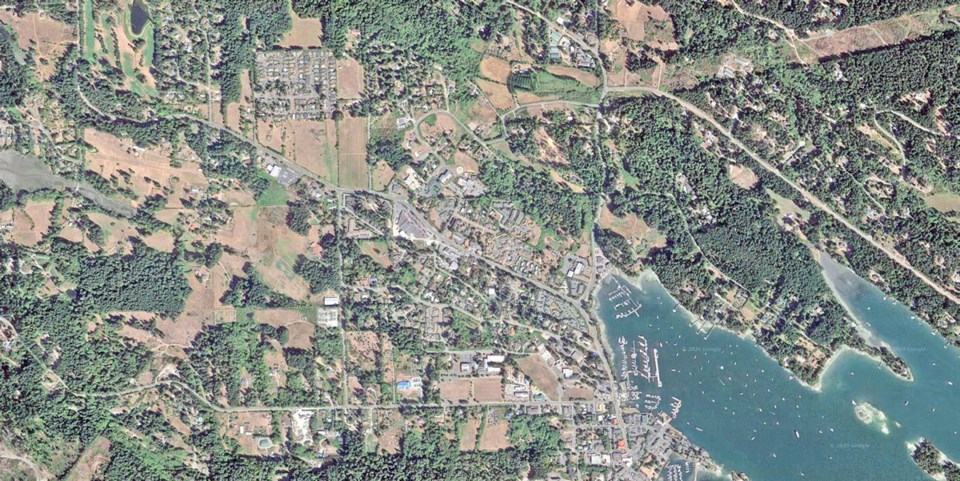One of the world’s natural wonders is being lost to development. The most recent trouble in paradise comes in the form of a housing crisis which, tragically, is perceived by many as an isolated incident with a simple solution — create more densities.
In fact, the Gulf Islands are caught in a complex humans-first syndrome that, unless broken, will result in crisis after crisis and the inexorable urbanization of a rural area protected by law.
The history of the Islands Trust government tasked with protecting the fragile ecosystems is important: In 1972 an all-party special committee of the legislature was established to investigate the unique problems facing the Trust Area.
The committee concluded that pressures arising from the area’s proximity to major urban centres were damaging the very features that made the Trust Area so attractive to residents and visitors.
In response to these findings, the provincial government enacted the Islands Trust Act in 1974.
While each island has its own story, the general trend throughout the archipelago is from low to higher density. This progression, which mirrors events around the world, is viewed by many as normal, inevitable, and even desirable. It also flies in the face of the Trust’s “preserve and protect” mandate.
Islands Trust documents contain many references to limiting growth, but are sadly lacking in detail. The words “rural” and “unique amenities,” for example, are left open to interpretation. Is “rural” one or five acres? Are shops a “unique amenity”? And why say “we accept there are limits to the ability of our environment to absorb continued development” without defining what those limits are?
The Islands Trust was unquestionably established to put the brakes on development, but in 2003 it shifted its focus from environmental to social goals.
This was reflected in Trust correspondence which, for 30 years, contained the tagline “To Preserve and Protect,” but suddenly and without explanation, changed to “Preserving Island Communities, Culture and Environment”.
Salt Spring, the largest and most populous of the islands, is the epicentre of the current malaise. There are countless illegal dwellings across the island, many of them unfit for human habitation.
The Trust has conceded the problem, fuelled by islanders seeking extra income, is widespread and that “most are flying under the radar.” Concurrently, there is a housing shortage that has forced many into substandard premises and turned bylaw enforcement into a nightmare.
At a recent public meeting, Trustee Laura Patrick discussed the endless battle of trying to enforce the island’s ban on short- term vacation rentals (STVRs). She indicated that, for every one that is closed, more pop up.
The rules-be-damned culture runs deep on the islands, but there are consequences: lawlessness makes a mockery of planning and, in the case of STVRs on Salt Spring, reduces the housing stock for full-time residents, thereby forcing elected trustees to consider ever higher densities.
The lack of accommodation for local employees is of particular concern as it affects essential services. Since the Trust has no tools to designate new densities for employees only, it uses a housing shotgun to blast target areas in the hope that some of the shot hits home for local workers. Unfortunately, it also blows holes in the 17,000 population cap specified in Salt Spring’s Official Community Plan.
Meanwhile, housing groups have formed and are putting intense pressure on trustees. A key organizer has written about the need for “many thousands” of new affordable housing units, an incredible number for a protected island that has a population of only 12,000 and where water is so scarce the local water utility has placed a moratorium on new hook-ups.
Housing advocates oppose gentrification, but seem less concerned about the environmental impact of changing the demographics of the island.
The debate raises the question of whether the Gulf Islands can be a regional go-to spot for people seeking affordable housing, while still meeting the goals of the Islands Trust.
The Gulf Islands are in crisis, and it must be remembered that their protection is not just for the benefit of those who live there, but also British Columbia generally.
The province must intervene to help with issues such as enforcement, water shortages and clearcut logging on private land. Above all, those in charge must work co-operatively to create a long-term plan to limit growth.
Failure to do so will see the islands lose their natural splendour and fade into something bland, ordinary and uninspiring.
Frants Attorp is a Salt Spring writer who has worked for several Gulf Islands publications.



